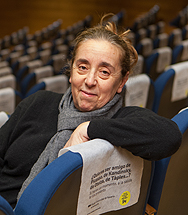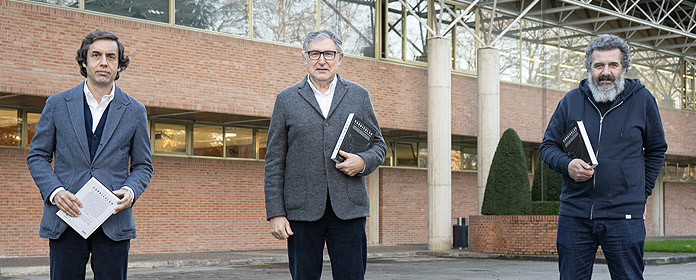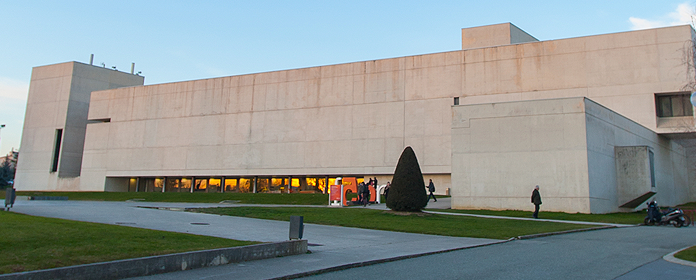Enriching Goya
Manuela Mena habló sobre <i>Vuelo de brujas y La Marquesa de Santa Cruz</i>

Flight of Witchesof 1798, and The Marquise of Santa Cruzof 1805, were the two works by Francisco de Goya that featured in the sixth of the lectures of the cycle "The Prado Museum: historical milestones of its collections", organized by the Fundación Amigos del Museo del Prado. organized by the Fundación Amigos del Museo del Prado and the School of Philosophy y Letras at the Museo Universidad de Navarra.
The speaker on this occasion was the head of conservation of eighteenth-century painting at the Prado Museum and considered the leading specialist in Spain in Goya, Manuela Mena, who analyzed these two works, which entered the gallery in 1999 and 1986, respectively, "because the Museum and its Royal board of trustees understood the significance of these paintings in the artist's work and all that they would contribute to the Museum, to which both magnify".
These two works, of very different genre (cabinet painting and aristocratic portrait), are examples of the Aragonese painter's capacity for invention and his use of metaphor to represent reality. Their destination was, like most of the artist's works, the most prominent aristocracy, only one step below the Kings, and at the same level as the house of Alba: the Dukes of Osuna.
The flight was one of six canvases about witches sold to the Dukes of Osuna to decorate a palace that the family had on the outskirts of Madrid. "Goya was interested in witches, the night, the dark, the unexplained, ignorance, superstition," Mena pointed out. "The truth is that we are not quite clear if this composition wants to convey a positive image or not of witches, since they appear illuminated and below two peasants and an ass, which are a symbol of ignorance", "It is possible that with this Goya wanted to refer to Freemasonry, where the snakes of the miters and the light could be a symbol of wisdom", "in addition, these three characters are not sucking the blood, but breathing air, wisdom, to the body they have in their hands," added the expert.
On the other hand, the portrait of the Marquesa de Santa Cruz features the second daughter of the Dukes of Osuna, whom Goya had known since she was a child. "In this painting we can see the meticulousness of Goya's technique, for example, in the oak crown, which symbolizes virtue and strength." Depicted as Terpsichore, the Greek muse of dance and song, the portrait of the Marquise is a novelty in the production of Goya, who until now had been more demure and Velazquez-like.
"Both paintings, both the flight and the marquise, so different in genre, are unique examples of Goya's capacity for invention and his use of metaphor to represent reality," concluded Manuela Mena.





